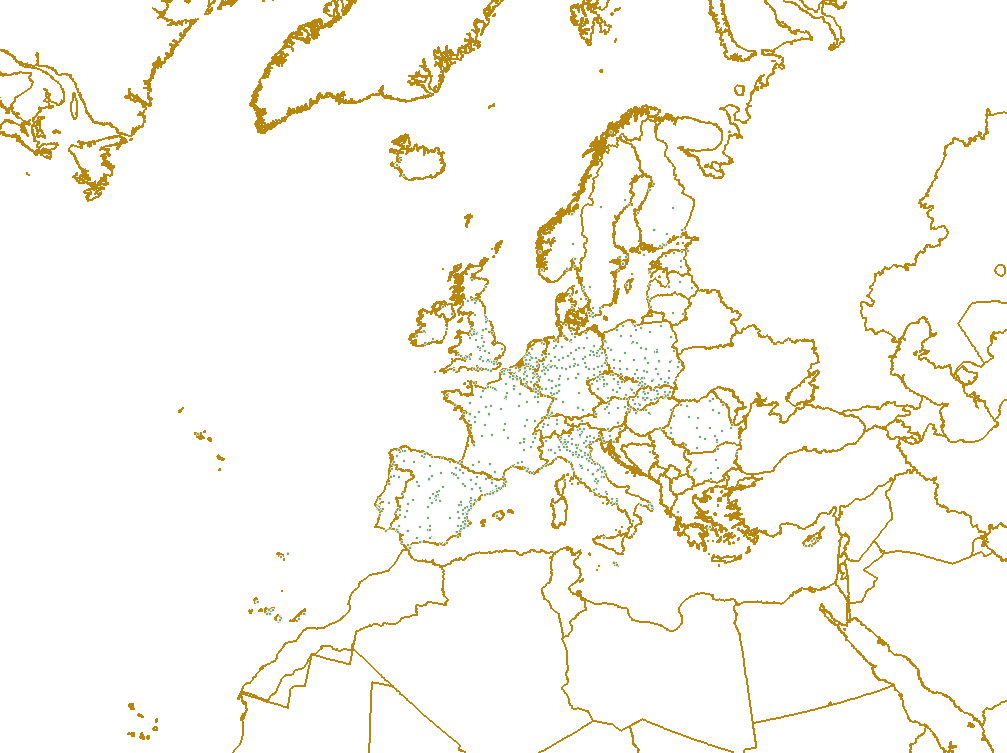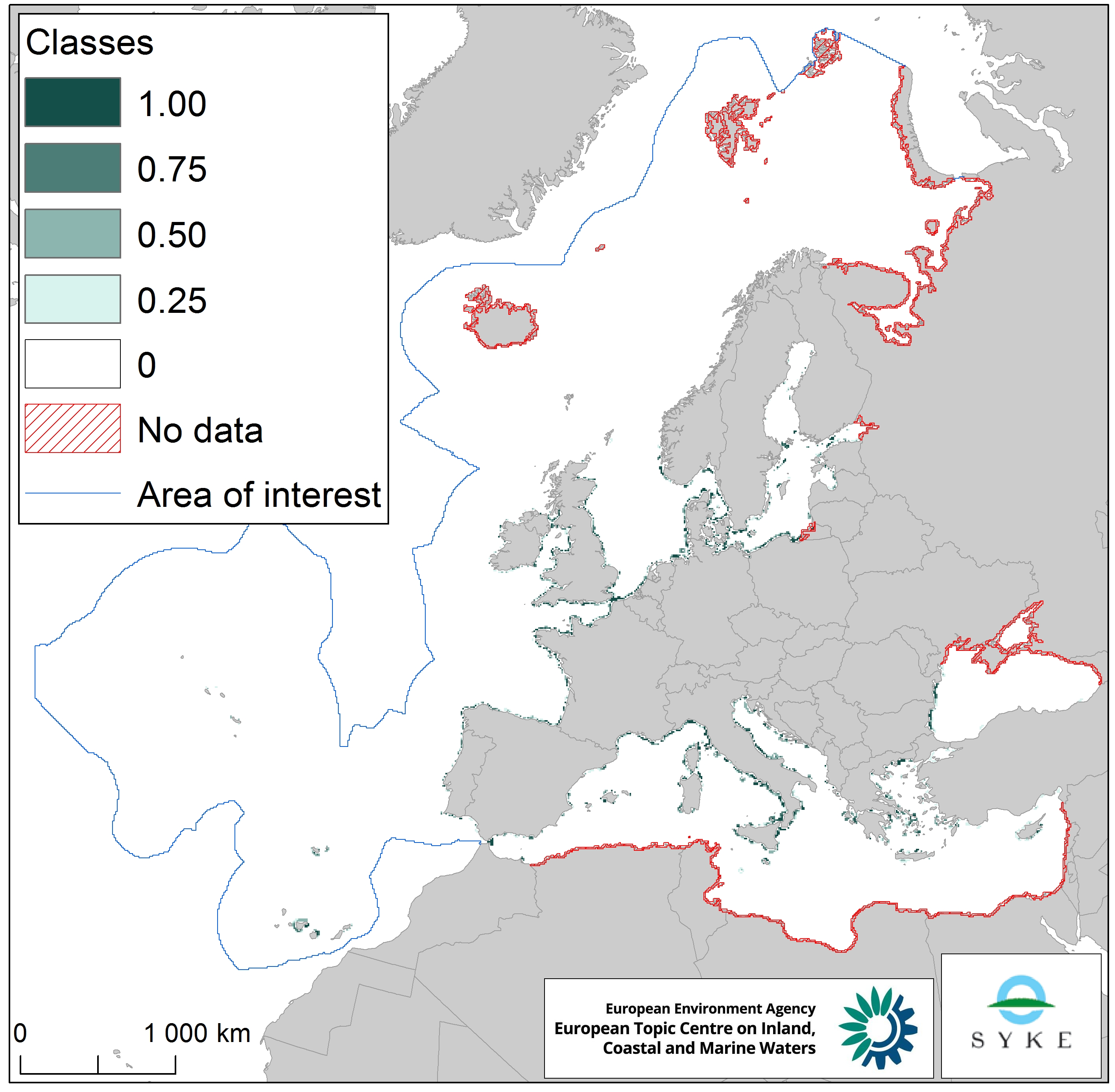health
Type of resources
Available actions
Topics
INSPIRE themes
Keywords
Contact for the resource
Provided by
Years
Formats
Representation types
Update frequencies
status
Scale
Resolution
-
Dødsårsager for personer døde i Danmark med gyldigt CPR-nummer og bopælsadresse i Danmark.
-
Antal af nye kræfttilfælde i Danmark fordelt på kræfttype, årstal og standardisering.
-

Member States provide an annual assessment of air quality in comparison to EU air quality thresholds. Commission Decision 2004/461/EC provides a questionnaire to be used by the Member States for the annual reporting under the Framework Directive and the related four Daughter Directives 1999/30/EC, 2000/69/EC, 2002/3/EC and 2004/107/EC. Member States have to divide their entire territory into zones. Zones can be regarded as the primary territorial units for assessment and management of air quality under the air quality directives. Consequently, unambiguous definition of all zones is needed. Member States have employed different approaches for the definition of their zones. Some Member States have divided their territory into a single set of zones serving all pollutants. Other Member States have defined a single base set of zones and modified some of the zones for the application to particular pollutants. Where a Member State has distinguished different sets of zones in relation to health protection and ecosystem/vegetation protection respectively, a single location can be situated in several zones, e.g. in a zone defined for all pollutants except lead and in another, larger zone defined for lead. More information about EU air quality standards is available on the DG Environment web site at http://ec.europa.eu/environment/air/quality/standards.htm. Pursuant to Article 22 of Directive 2008/50/EC, Member States may notify to the Commission when in their opinion the conditions are met in a given zone or agglomeration for postponing the attainment deadline for the limit values for nitrogen dioxide and benzene, or for being exempt from the limit values for PM10. More information is available at: http://ec.europa.eu/environment/air/quality/legislation/time_extensions.htm . Additional information is available in The annual technical overview and analysis of the reports submitted by Member States (http://acm.eionet.europa.eu/databases/aq-questionnaire/annual_reports_aqq.html). Zones are designated for the following pollutants: B – Benzene; BaP – Benzo(a)pyrene; C – Carbon Monoxide; L – lead; AsCdNi – Heavy metals: Arsenic, Cadmium, Nickel; NH – Nitrogen Dioxide for human protection; NV – NOx for vegetation protection; O – ozone; PM10 – particulate matter less than 10 microgrammes; PM25 – particulate matter less than 2.5 microgrammes; SE – SO2 for ecosystems protection; SH – SO2 for human protection.
-

Member States provide an annual assessment of air quality in comparison to EU air quality thresholds. Commission Decision 2004/461/EC provides a questionnaire to be used by the Member States for the annual reporting under the Framework Directive and the related four Daughter Directives 1999/30/EC, 2000/69/EC, 2002/3/EC and 2004/107/EC. Member States have to divide their entire territory into zones. Zones can be regarded as the primary territorial units for assessment and management of air quality under the air quality directives. Consequently, unambiguous definition of all zones is needed. Member States have employed different approaches for the definition of their zones. Some Member States have divided their territory into a single set of zones serving all pollutants. Other Member States have defined a single base set of zones and modified some of the zones for the application to particular pollutants. Where a Member State has distinguished different sets of zones in relation to health protection and ecosystem/vegetation protection respectively, a single location can be situated in several zones, e.g. in a zone defined for all pollutants except lead and in another, larger zone defined for lead. More information about EU air quality standards is available on the DG Environment web site at http://ec.europa.eu/environment/air/quality/standards.htm. Pursuant to Article 22 of Directive 2008/50/EC, Member States may notify to the Commission when in their opinion the conditions are met in a given zone or agglomeration for postponing the attainment deadline for the limit values for nitrogen dioxide and benzene, or for being exempt from the limit values for PM10. More information is available at: http://ec.europa.eu/environment/air/quality/legislation/time_extensions.htm . Additional information is available in The annual technical overview and analysis of the reports submitted by Member States (http://acm.eionet.europa.eu/databases/aq-questionnaire/annual_reports_aqq.html). Zones are designated for the following pollutants: B – Benzene; BaP – Benzo(a)pyrene; C – Carbon Monoxide; L – lead; AsCdNi – Heavy metals: Arsenic, Cadmium, Nickel; NH – Nitrogen Dioxide for human protection; NV – NOx for vegetation protection; O – ozone; PM10 – particulate matter less than 10 microgrammes; PM25 – particulate matter less than 2.5 microgrammes; SE – SO2 for ecosystems protection; SH – SO2 for human protection. ************ In this revision 2, Montenegro was added to the SE and NV datasets. ************
-

Near real time benzene concentration measurements transmitted to EEA by national and regional air quality networks (http://www.eea.europa.eu/themes/air/air-quality/resources/who-provides-the-air-quality-data). The measurements are preliminary and may be changed at any time by the data providers following their quality control procedures. The measurements may not be used for compliance purposes.
-

This raster dataset provides the modelling of the climate suitability index values (0-100%) for tiger mosquito (Aedes albopictus) for 100 European cities for the years 2008-2009, with a resolution of 100 m. Aedes Albopictus has become a common occurrence in Southern Europe and transmits diseases such as Zika, dengue and chikungunya. The climatic suitability for tiger mosquito depends on factors such as sufficient amounts of rainfall, high summer temperatures and mild winters. Climate change is anticipated to further facilitate the spread of tiger mosquitoes across Europe by changing temperature and precipitation patterns, thereby increasing the suitable habitat. In the framework of the Copernicus Climate Change Service (C3S) SIS European Health, VITO has provided to the Climate Data Store 100m resolution hourly temperature data for 100 European cities, based on simulations with the urban climate model UrbClim (De Ridder et al., 2015). From this dataset, this climate suitability dataset has been generated based on annual precipitation and the average temperature in January and during the summer period (months June, July and August) for the years 2008-2009, following the methodology by European Centre for Disease Prevention and Control (ECDC, 2009). The 100 European cities for the urban simulations were selected based on user requirements within the health community.
-

Near real time concentration of PM2.5 measurements transmitted to EEA by national and regional air quality networks (http://www.eea.europa.eu/themes/air/air-quality/resources/who-provides-the-air-quality-data). The measurements are preliminary and may be changed at any time by the data providers following their quality control procedures. The measurements may not be used for compliance purposes.
-

Near real time nitrogen oxides (NOx) concentration measurements transmitted to EEA by national and regional air quality networks (http://www.eea.europa.eu/themes/air/air-quality/resources/who-provides-the-air-quality-data). The measurements are preliminary and may be changed at any time by the data providers following their quality control procedures. The measurements may not be used for compliance purposes.
-

Near real time carbon monoxide (CO) concentration measurements transmitted to EEA by national and regional air quality networks (http://www.eea.europa.eu/themes/air/air-quality/resources/who-provides-the-air-quality-data). The measurements are preliminary and may be changed at any time by the data providers following their quality control procedures. The measurements may not be used for compliance purposes.
-

This raster dataset represents the input of microbial pathogens along the European coastlines. The pressure layer was created using three different datasets rasterized using the EEA 10 km grid: urban agglomerations reported under the Urban Waste Water Treatment Directive (2017), EMODnet dataset of ports lying on the sea coast together with passenger information (annual average 2006-2016) and Intestinal enterococci and Escherichia coli data at bathing sites as measured under the Bathing Water Directive reporting obligation (average 2008-2016). All three datasets were then classified into four classes, aggregated and classified again (quantile classes between 0 and 1, with the latter being the highest pathogen pressure). This dataset has been prepared for the calculation of the combined effect index, produced for the ETC/ICM Report 4/2019 "Multiple pressures and their combined effects in Europe's seas" available on: https://www.eionet.europa.eu/etcs/etc-icm/etc-icm-report-4-2019-multiple-pressures-and-their-combined-effects-in-europes-seas-1.
 RUC Geo-Data catalogue
RUC Geo-Data catalogue